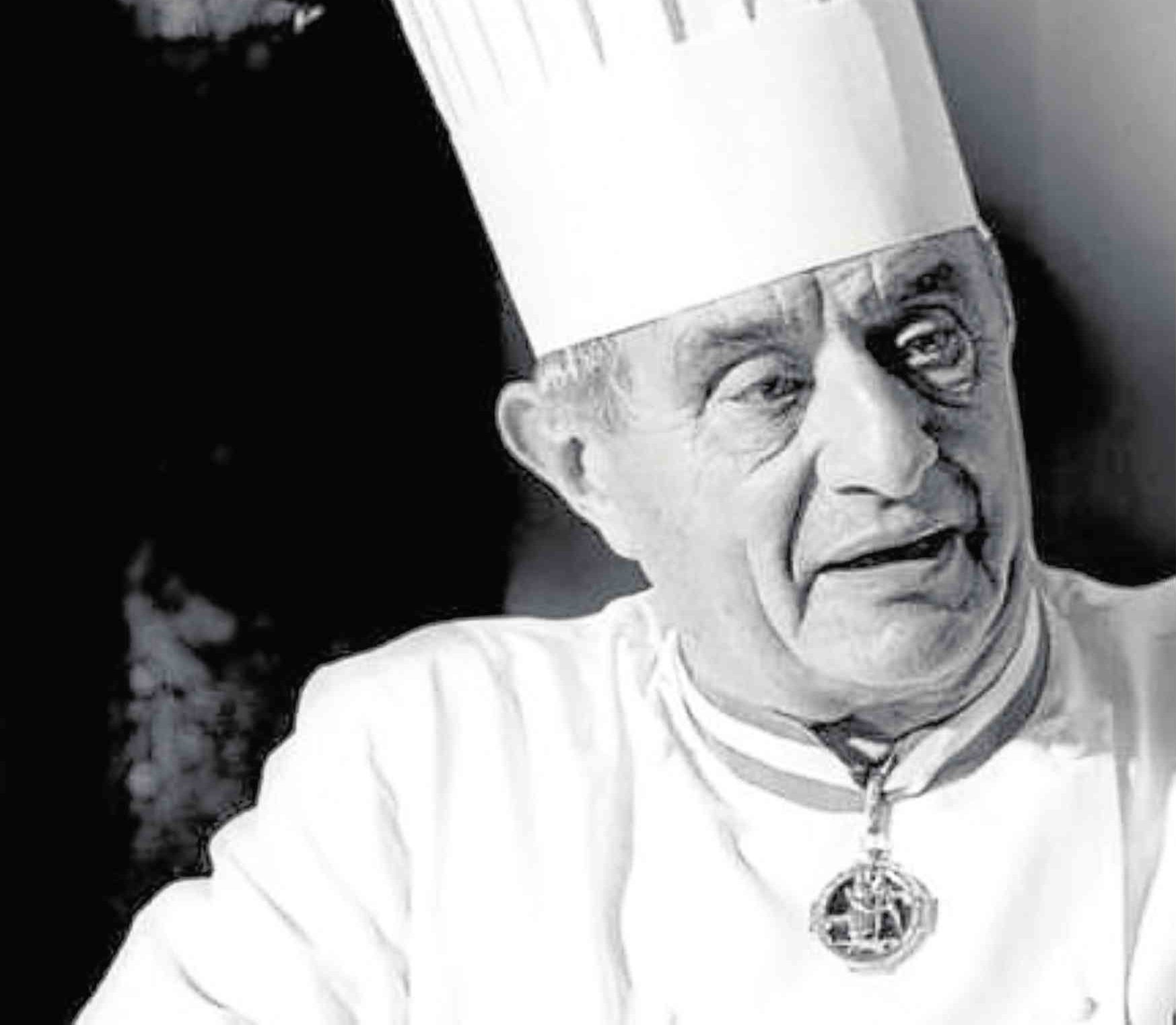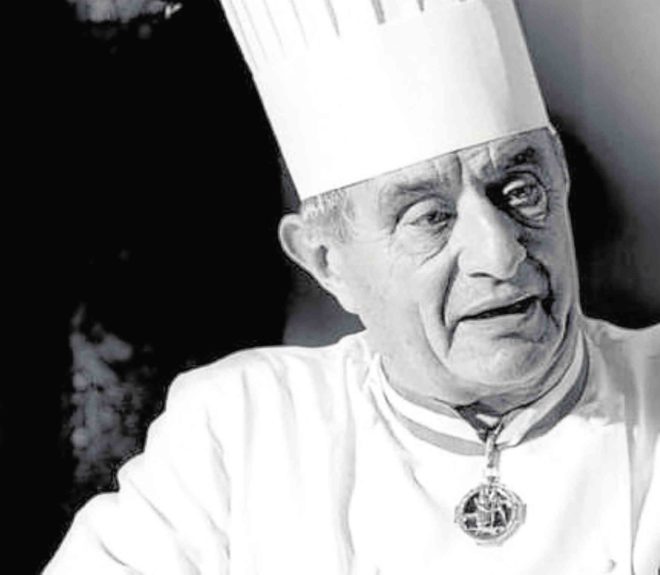
News that revered and innovative French chef Paul Bocuse had died on Jan. 21 created a big buzz in the culinary world. Some friends sent me their memorabilia.
Martin Kaspar, chef-patron of L’Entrecote Restaurant in BGC, sent his picture with Bocuse taken in 2005 during the Bocuse d’Or elimination round in Montreaux, Switzerland. The Bocuse d’Or is the biennial cooking competition—perhaps the most prestigious—created by Bocuse and held at the trade and food show called Sirha in Lyon, France, the chef’s hometown.
According to Kaspar, that was his second time to meet Bocuse. The first was when he competed at the junior world challenge in South Africa in 1986. Bocuse was such a personality (many food writers say he was the first celebrity chef) that the whole room cheered when he walked in, Kaspar recalled.
Kaspar also reminded us that the Gusteau character in the movie “Ratatouille” was patterned after Bocuse.
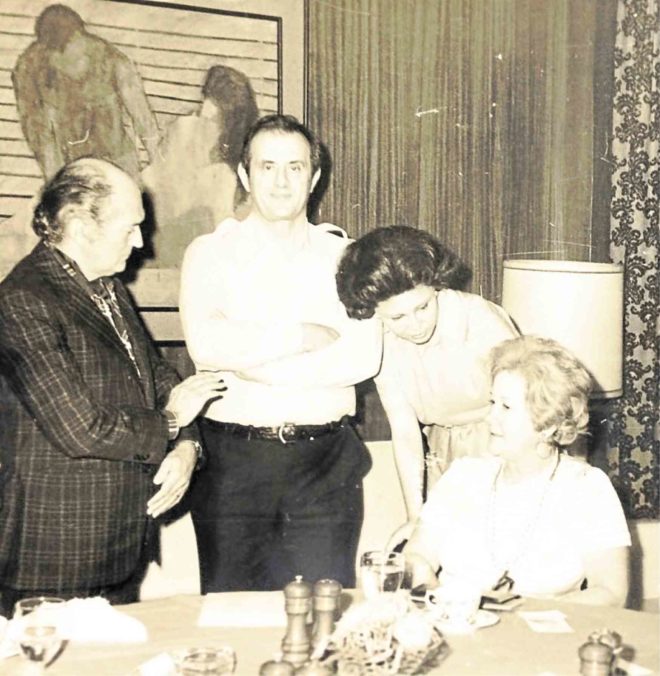
Nouvelle cuisine
Few people know that Bocuse came to Manila in 1974.
In her book “Festive Dishes with Family and Friends” (Anvil Publishing, 2010), Nora Daza wrote that she invited Bocuse to visit. He obliged and cooked something using the methods of the new culinary movement at the time, nouvelle cuisine, at Daza’s Au Bon Vivant in Ermita, Manila.
Daza’s daughter, Nina Daza Puyat, sent a photograph taken at Cornell room. That visit included pastry chef Gaston Lenotre, who made popular fruit-flavored macarons and whose business empire (patisserie and restaurants) proved his knowledge of food.
The nouvelle cuisine espoused by Bocuse became the inspiration for Nueva Cucina Vasca (New Basque Cuisine), according to one of its founders, Spanish chef Pedro Subijana of Akelare. He told me that Bocuse came to Spain to talk about the new French cuisine movement, then invited Subijana and Juan Mari Arzak to Lyon.
It gave them the idea to form their own movement, which was to take traditional cuisine to the modern era and focus on light sauces, seasonality and simple presentation.
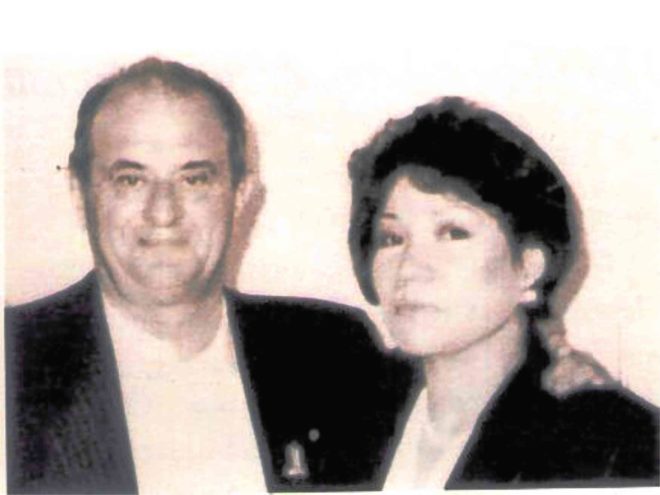
Singular honor
It was Via Mare’s Glenda Barretto who had the singular honor of being invited to judge in the Bocuse d’Or in 1989. She lost her pictures in the fire that razed her home, except that of the judges, with her as the only woman in the group.
She remembered being brought to the Lyon market, reputed to be the best source of prime French ingredients, and eating oysters for breakfast.
She recalled that, on Bocuse’s next visit to Manila, she served Bisque Mediteranee, a soup that wasn’t strictly a bisque because it contained pieces of seafood instead of just seafood essence.
In 2016, the Dusit Thani Hotel Group announced that Institute Paul Bocuse would have its first culinary school in Asia in the Philippines, specifically at the new Dusit Hotel in Bonifacio Global City, Taguig. Barretto said then that she hoped the master chef would attend the inauguration in 2017.
There was no follow-up news after that announcement. Maybe it was because Bocuse was already ill. He died in Lyon, at Collonges-au-Mont-d’Or where he was born, and where his restaurant L’Auberge du Pont de Collonges is. It hasn’t lost its Michelin three-star rating.
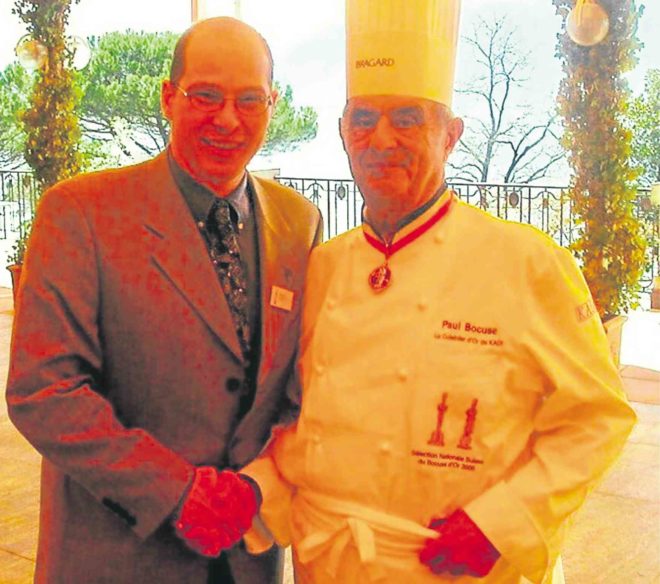
Regional French cooking
My own memorabilia is the cookbook he wrote—“Bocuse’s Regional French Cooking” (Groupe Flammarion, 1997). The photography is beautiful and the recipes doable.
In his preface, Bocuse wrote how he places “more importance on the best products, food that has genuine flavors, beautifully ripened cheeses, creamy butter, fish that shines with freshness, free-range chickens fed on grain, farm-raised beef, aromatic fruits and vegetables and fresh wholesome breads.”
It has none of nouvelle cuisine, just hearty traditional cooking. In tribute, perhaps I shall do his coq au vin (Lyonnaise). I have cooked several times the soupe au pistou (vegetable, basil and garlic soup) of Provence, and the poulet Basquaise (Basque-style chicken) of Bordelaise, and have relished both the cooking and eating of Moules a la mariniere of the Bretagne-Normandie region.
I plan to cook the quiche lorraine of Alsace and the Gratin au Macaroni, the Lyonnaise mac and cheese, if I can get the long macaroni that used to be made by a local pasta brand.
E-mail the columnist: [email protected]

